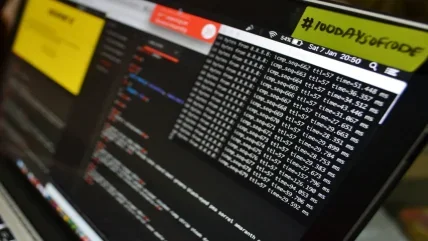
In an increasingly digitised world, the power industry faces growing challenges in securing its critical infrastructure from cyber threats. Cyber insecurity poses significant risks to power generation, transmission, and distribution systems, potentially leading to disruptions, financial losses, and compromises in safety. This article explores the multifaceted nature of cyber insecurity in the power industry, examining its sources, vulnerabilities, and strategies for mitigation. By understanding these dynamics, stakeholders can better protect their assets and ensure the reliability and resilience of the power grid.
Understanding Cyber Insecurity
Cyber insecurity encompasses a range of threats and vulnerabilities that can compromise the integrity, availability, and confidentiality of digital systems. In the power industry, cyber threats can target control systems, communication networks, and data repositories, posing risks to operational efficiency and system reliability. These threats can originate from various actors, including hackers, cybercriminals, state-sponsored entities, and disgruntled insiders.
Sources of Cyber Threats
Cyber threats in the power industry can arise from multiple sources:
1. External Hackers: Malicious actors may attempt to breach the network perimeter and gain unauthorized access to critical infrastructure systems. These attacks can involve malware, phishing, ransomware, or exploitation of software vulnerabilities.
2. Insider Threats: Employees or contractors with access to sensitive systems may pose a risk if they misuse their privileges or engage in malicious activities. Insider threats can be intentional or inadvertent, stemming from negligence, ignorance, or coercion.
3. Nation-State Actors: State-sponsored entities may target power infrastructure for espionage, sabotage, or geopolitical purposes. Advanced persistent threats (APTs) deployed by nation-states can be highly sophisticated and difficult to detect.
Vulnerabilities in Power Systems
Power systems are vulnerable to various cyber attacks due to their reliance on interconnected digital technologies:
1. SCADA and PLC Systems: Supervisory control and data acquisition (SCADA) and programmable logic controller (PLC) systems, used for monitoring and controlling industrial processes, are prime targets for cyber attacks. Vulnerabilities in these systems can result in operational disruptions and equipment damage.
2. Communication Networks: Communication networks, including wired and wireless infrastructure, are critical for transmitting data between control centres, substations, and field devices. Weaknesses in network security can enable attackers to intercept, manipulate, or disrupt communication channels.
3. Data Integrity: Ensuring the integrity of data stored in power industry databases and information systems is essential for maintaining operational reliability and regulatory compliance. Cyber attacks that tamper with data integrity can lead to erroneous control decisions and compromised situational awareness.
Impact of Cyber Insecurity
Cyber attacks on the power industry can have far-reaching consequences:
1. Operational Disruptions: Cyber incidents can disrupt power generation, transmission, and distribution operations, leading to service outages and customer inconvenience. These disruptions can have cascading effects on other critical infrastructure sectors, such as healthcare, transportation, and telecommunications.
2. Financial Losses: Recovering from cyber attacks can incur substantial financial costs, including expenses related to incident response, system restoration, regulatory fines, and legal liabilities. Additionally, lost revenue resulting from service interruptions can impact the profitability of power companies.
3. Safety Risks: Cybersecurity breaches in the power industry can compromise safety-critical systems, posing risks to personnel, equipment, and the environment. Malicious manipulation of control systems or inaccurate data inputs can lead to equipment failures, accidents, and environmental contamination.
Strategies for Mitigation
To mitigate the risks of cyber insecurity in the power industry, stakeholders can adopt various proactive measures:
1. Risk Assessment and Management: Conducting comprehensive risk assessments to identify and prioritise cybersecurity risks is essential for developing effective mitigation strategies. This involves evaluating the potential impact of cyber threats on critical assets, systems, and operations.
2. Cyber Hygiene Practices: Implementing cybersecurity best practices, such as regular software updates, patch management, access control, and employee training, can strengthen the security posture of power industry organisations.
3. Network Segmentation: Segregating operational technology (OT) and information technology (IT) networks can limit the impact of cyber attacks by containing them within specific network segments. This approach helps minimise the spread of malware and reduces the attack surface.
4. Incident Response Planning: Developing robust incident response plans and procedures enables power industry organisations to effectively detect, contain, and mitigate cyber incidents. This includes establishing communication protocols, defining roles and responsibilities, and conducting tabletop exercises.
5. Collaboration and Information Sharing: Engaging in information sharing initiatives with industry peers, government agencies, and cybersecurity organisations facilitates collective defence against cyber threats. Sharing threat intelligence and best practices helps enhance situational awareness and resilience.
Regulatory and Policy Considerations
Regulatory frameworks and industry standards play a crucial role in shaping cybersecurity practices in the power industry:
1. Regulatory Compliance: Compliance with cybersecurity regulations and standards, such as the NERC CIP standards in North America or the EU NIS Directive in Europe, is mandatory for power industry entities. These regulations establish minimum cybersecurity requirements and promote a culture of continuous improvement.
2. International Cooperation: Collaborating with international partners on cybersecurity initiatives fosters harmonisation of standards and best practices across borders. Initiatives such as the International Society of Automation’s ISA/IEC 62443 series provide globally recognised guidelines for industrial cybersecurity.
The Future of Cybersecurity in the Power Industry
As the power industry continues to digitise and integrate advanced technologies, cybersecurity will remain a top priority. Emerging trends such as the Internet of Things (IoT), artificial intelligence (AI), and cloud computing present both opportunities and challenges for cybersecurity practitioners. By embracing innovative solutions and maintaining vigilance against evolving threats, the power industry can safeguard its critical infrastructure and uphold the trust of customers and stakeholders.
Conclusion
Cyber insecurity poses significant risks to the power industry, threatening the reliability, resilience, and safety of critical infrastructure systems. By understanding the sources, vulnerabilities, and consequences of cyber threats, stakeholders can implement effective mitigation strategies to protect their assets and operations. Through collaboration, innovation, and regulatory compliance, the power industry can navigate the complex landscape of cyber insecurity and ensure a secure and sustainable energy future for all.






